Last updated on February 13, 2024
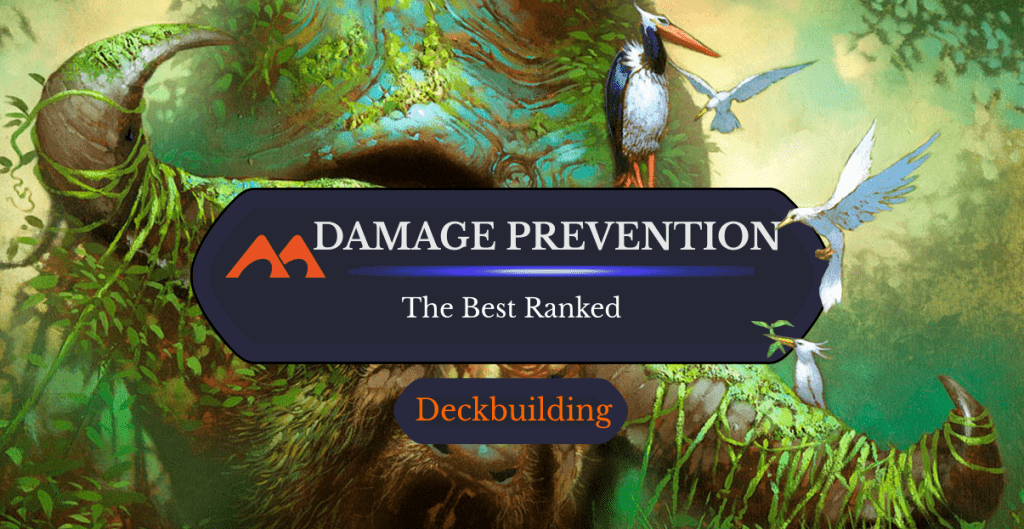
Vigor | Illustration by Jim Murray
Direct damage is Magic’s main way to win a game. You have alternatives, but most decks aim to reduce their opponents’ life points to 0 (or less). The problem is when you’re on the receiving end of that damage. No one wants to get 20 points of damage to the face, after all.
Worry not! There are entire strategies built around the idea of being able to prevent as much damage as possible, usually called “pillow forts.” The goal of these archetypes and strategies is to avoid damage to yourself and permanents you control while you build your own forces. Even if you’re playing other strategies, there are plenty of decks that can benefit from damage prevention.
Let’s take a look at some of the best damage prevention out there!
What Is Damage Prevention In MTG?

Fog Bank | Illustration by Howard Lyon
Damage prevention cancels the effects from damage being dealt to players or permanents. This means life and loyalty counters loss, infect, wither, or effects that trigger when damage is dealt are prevented.
This doesn’t prevent effects that trigger when creatures attack or damage spells from resolving, though.
Best White Damage Prevention Cards
#14. Angelsong
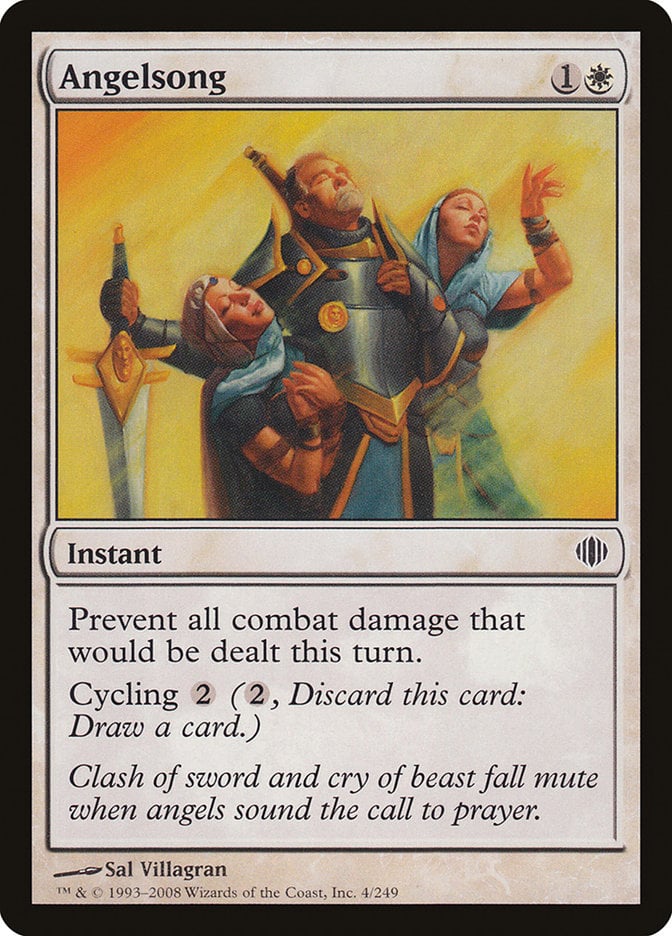
Angelsong is completely straightforward in its damage prevention ability. What I like about it is its cycling ability which makes it a versatile addition for decks that rely too heavily on white and may not have too much card draw.
#13. Holy Day
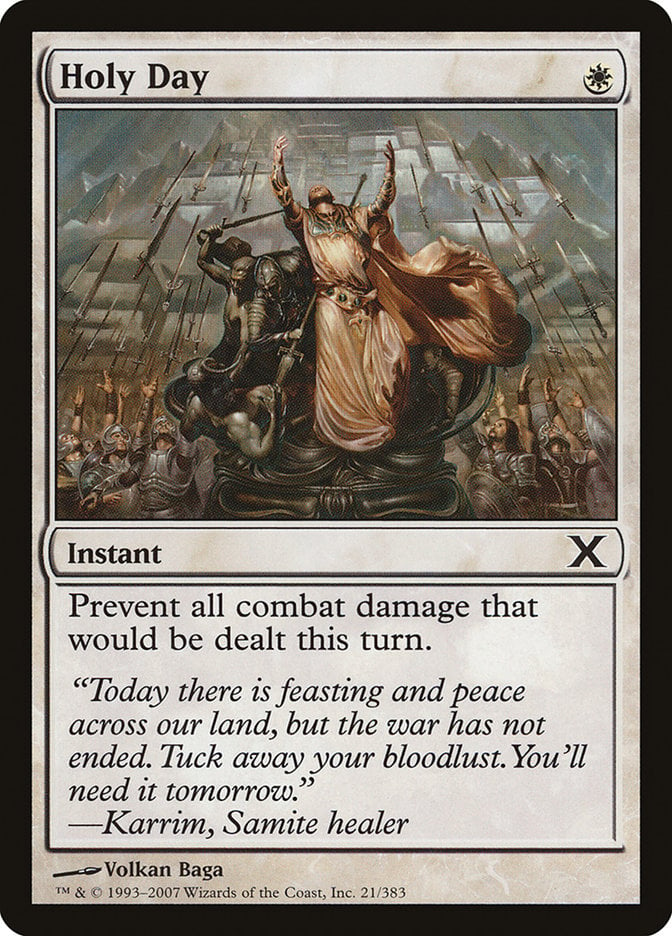
Holy Day and Angelsong’s spots on this list can be pretty interchangeable in my opinion. Holy Day doesn’t have the card draw versatility of Angelsong, but it costs less. It’s easier to cast in a pinch without having to hold back from casting things on your turn.
#12. Ethereal Haze
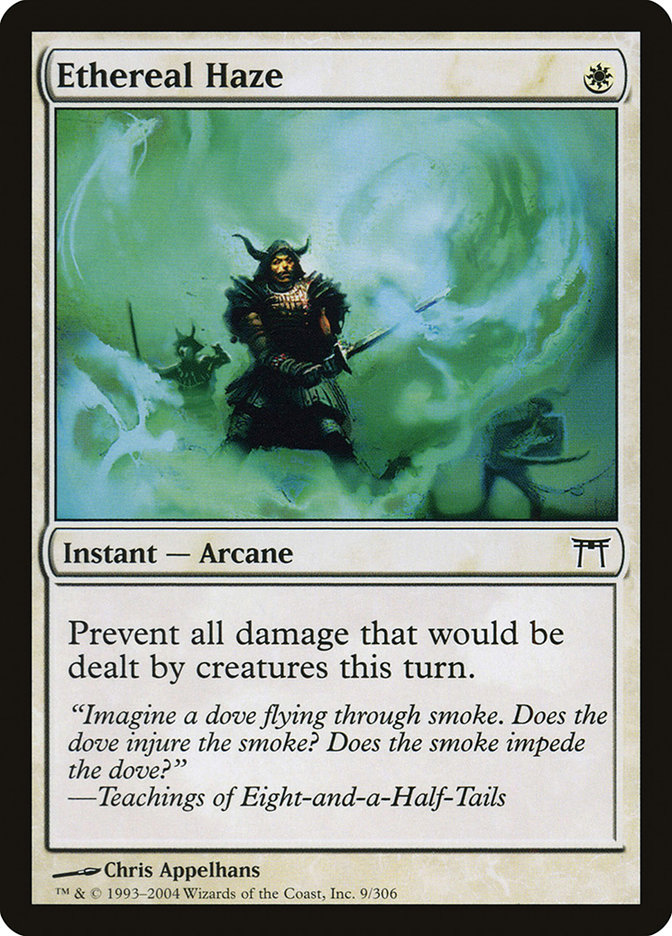
What’s better than preventing all combat damage dealt by creatures this turn? Preventing any type of damage dealt by creatures this turn! Ethereal Haze may only work for a single turn, but if you play it right it can stop things like Niv Mizzet, Parun from annihilating you if its player manages to draw their entire deck.
#11. Riot Control
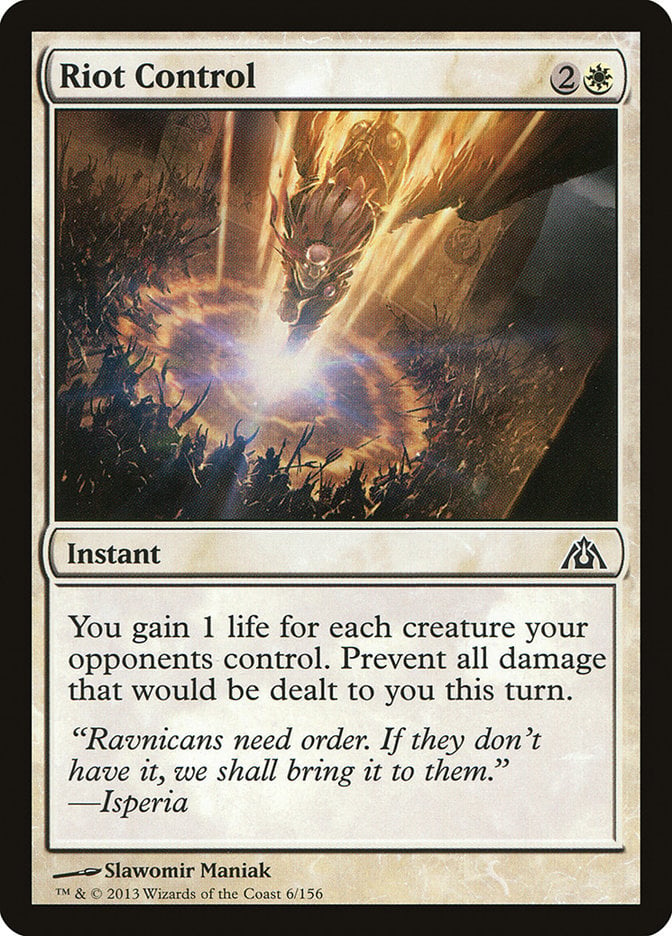
Riot Control can be a very circumstantial card. It has a relatively high cost for a reactive spell, so that can turn it into deadweight in your hand or a reason not to use your mana as well as you could have. What this card has going for it is that it can save you from a dire situation if the board is full enough. Additionally, it prevents all damage, not just combat damage.
#10. Comeuppance
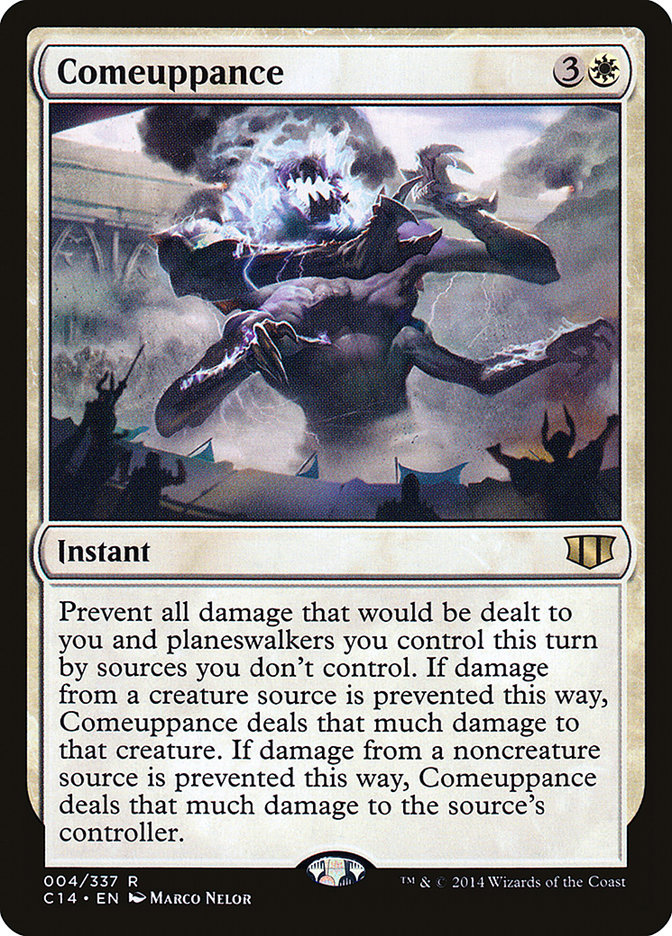
One thing I really like about most white damage prevention cards is how they focus on not only preventing that damage but also doing something with it. Comeuppance can be a great way to turn a huge attacking board or a massive damage spell into an advantage for yourself.
#9. Eiganjo Castle
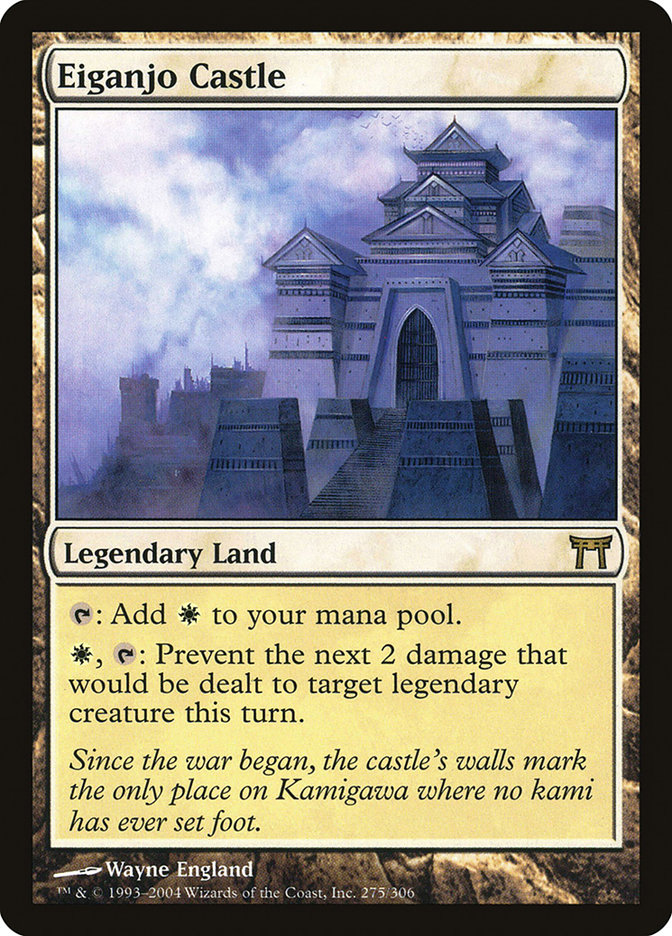
I’d probably rank this card lower if my brain weren’t so dedicated to EDH when thinking of a card’s usefulness. Eiganjo Castle is essentially a commander-protecting device. Unless you’re playing a very legendary-heavy deck, odds are you’re gonna be using this card’s effect to protect one very specific creature. It’s not only on a land, but on one that enters the battlefield untapped.
#8. Blessed Sanctuary
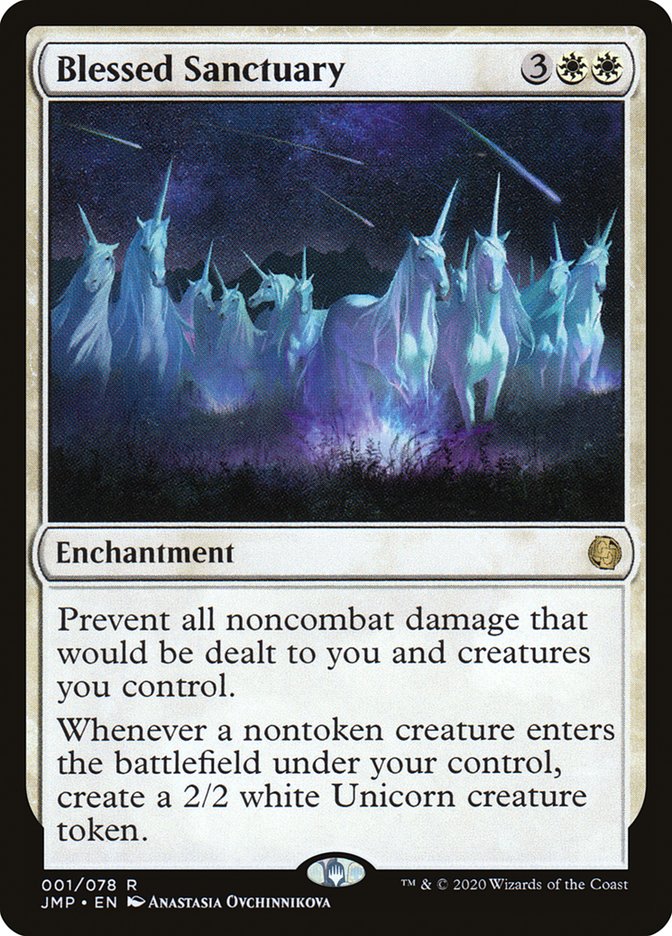
Preventing non-combat damage is a great way to disable several alternative wincons in EDH. Add to that the fact that Blessed Sanctuary gives you an additional 2/2 creature whenever you cast a creature spell, essentially granting you free blockers against your opponents. It’s a more roundabout way to prevent that damage from hitting you in the face at least. I do feel kinda cold speaking this way about unicorns though. It feels cruel.
#7. Solitary Confinement
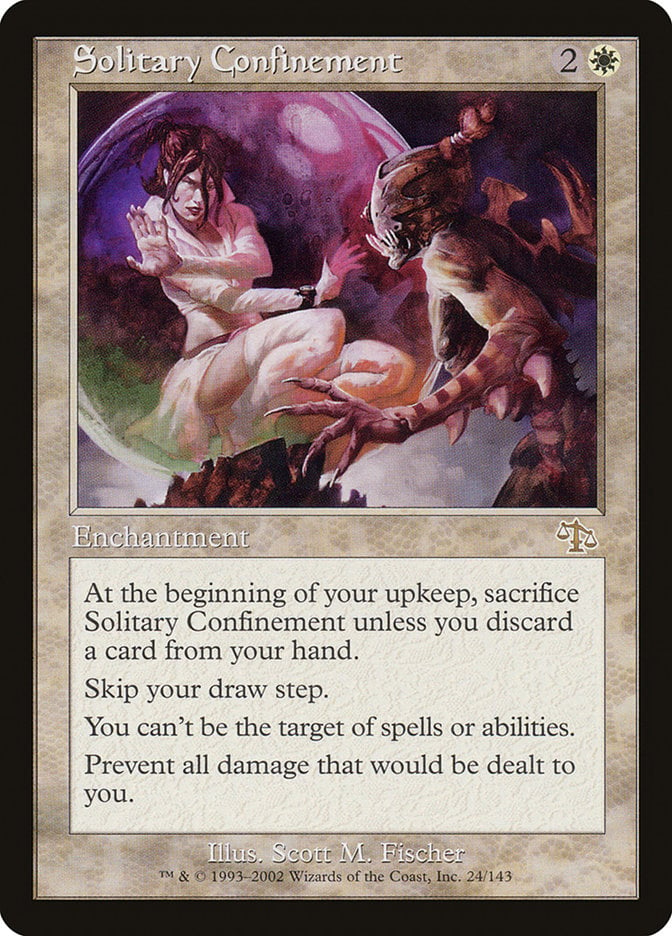
I’m a bit indecisive about this card. At first glance it feels like you’re damaging yourself way more than you’re damaging your opponents. I think Solitary Confinement can be a good last-resort way to protect yourself while you try to do things like recover after a particularly bad hit or set up some kind of combo.
#6. Kor Haven

Kor Haven is a repeatable targeted damage prevention, which is already pretty solid. It also has the advantage that it only prevents damage dealt by, but not damage dealt to, the target creature. You can take down a large creature by using several blockers without running the risk of losing any of them. Same goes for low-defense deathtouch creatures and other ways to dispose of enemy threats through combat.
#5. Kami of False Hope
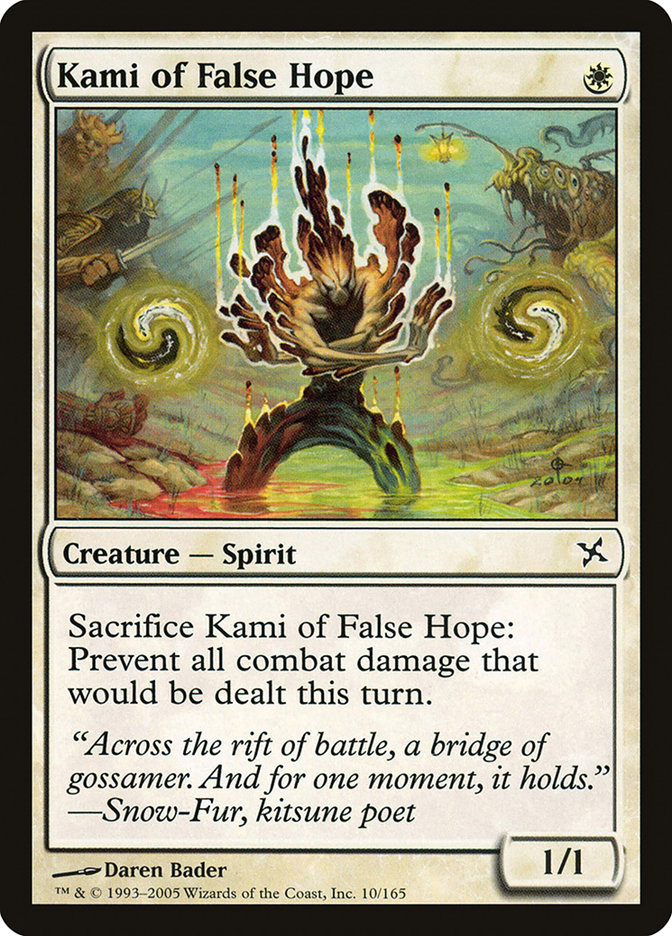
Kami of False Hope is basically Holy Day on a 1/1 body. Letting your opponents know you can prevent combat damage easily can be seen as an advantage or a disadvantage depending on your strategy. I think it works great because you can use this to throw opponents off the scent of other damage prevention cards you may have in your hand. It fits great into politics-focused strategies.
#4. Selfless Squire
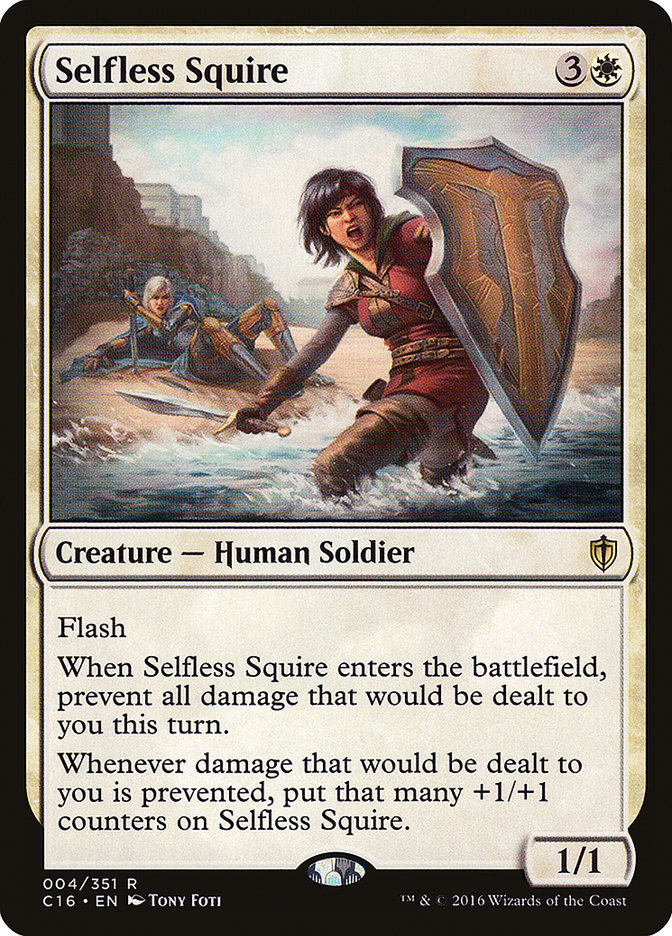
I really like that Selfless Squire is simultaneously a great damage prevention card while also being a great payoff for other damage prevention cards. I don’t have much to add; it’s great and you should add it to any and all pillowfort decks.
#3. The Wanderer

Simple and straightforward as it gets. The Wanderer is a permanent source of protection from non-combat damage while allowing you to dispose of particularly nasty threats. I recommend having it in a deck with enough proliferate effects so you can take better advantage of it.
#2. Losheel, Clockwork Scholar
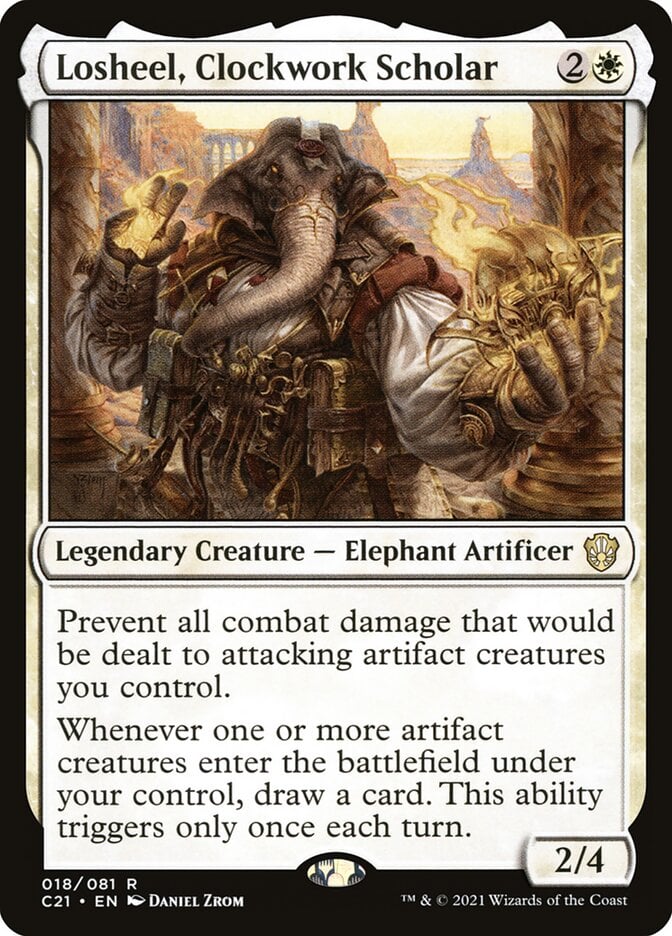
If it weren’t for the massive support that artifact creatures (especially vehicles) have been getting, this card would’ve probably ranked way lower. Losheel, Clockwork Scholar is a pretty circumstantial card as a source of damage prevention, but it’s definitely meant to go in artifact creature decks and it can make a huge difference there. Giving you both repeatable damage prevention and card advantage on a single card is pretty solid.
#1. Dawn Charm
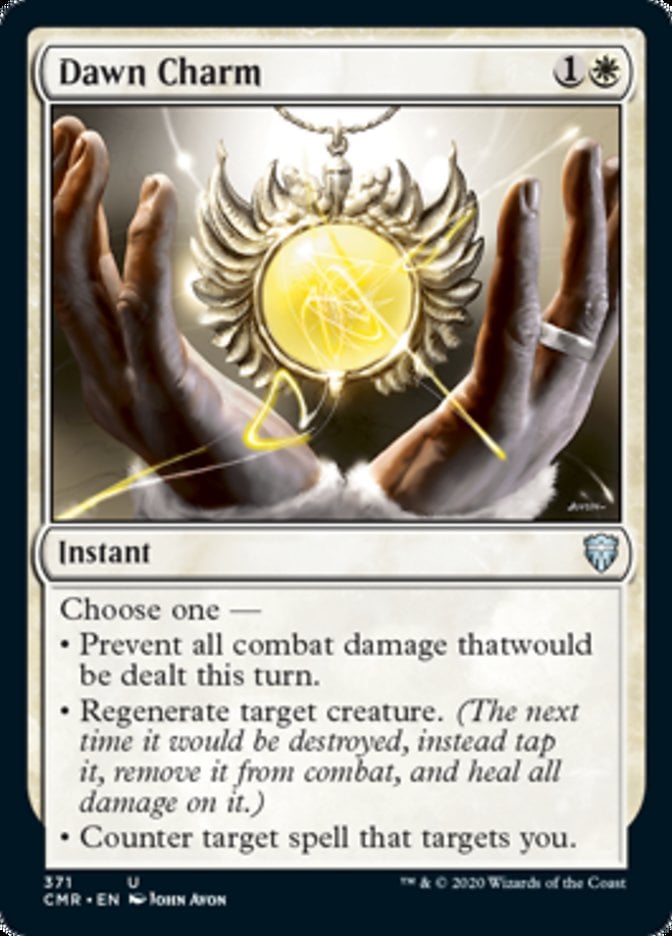
Alright, I think I may be cheating on this one a little bit. Everyone knows that what makes Dawn Charm a great card for EDH is neither its damage prevention nor its regeneration effects. This is one of the few and rare white counters, and it can be invaluable in decks that don’t have access to others. That said, it can still be used as a good enough damage prevention tool.
Best Blue Damage Prevention Card
#1. Fog Bank
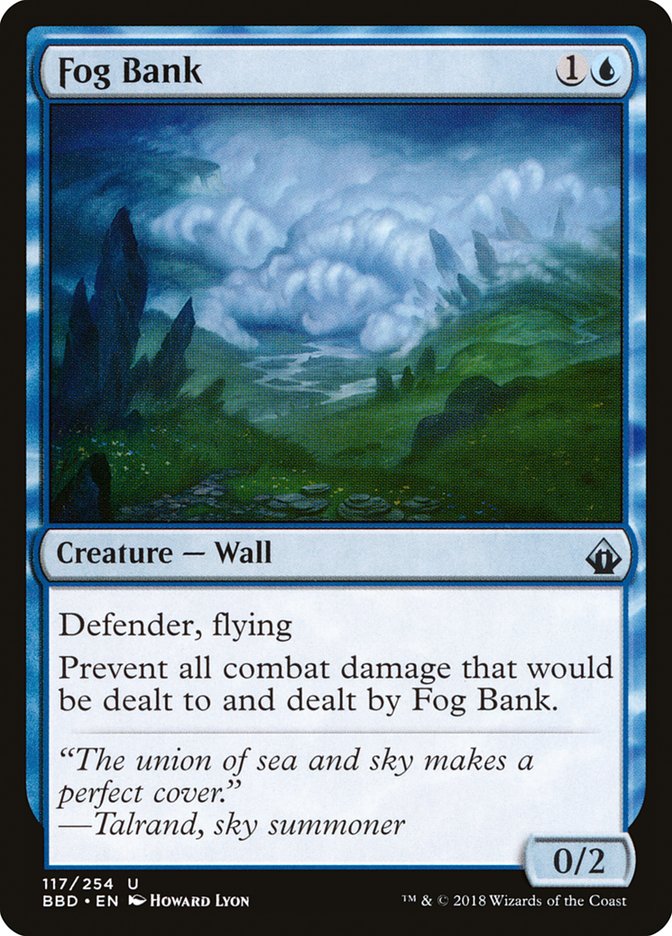
To be honest, Fog Bank and the black Angel of Suffering are about the same depending on what you’re looking for. Angel of Suffering is better if you already have a specific strategy that benefits from it or you build around it. Fog Bank is better as an addition to any deck that needs some extra defense. This card prevents any damage that would be dealt to it, giving you a trusty and consistent blocker against large creatures.
Best Black Damage Prevention Cards
#2. Angel of Suffering
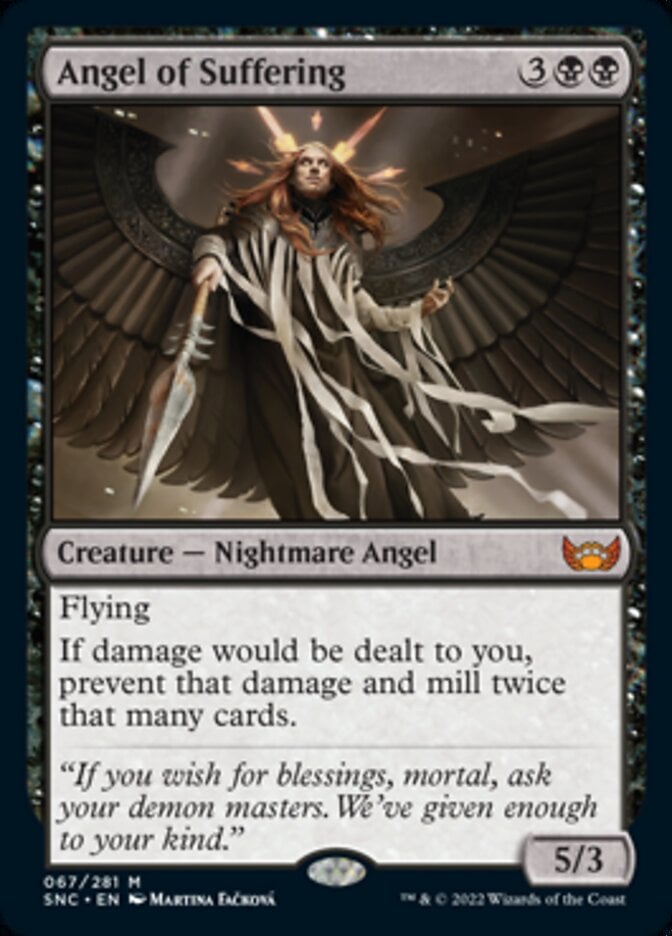
There are two strategies that can take advantage of Angel of Suffering: milling your opponents and self-mill. Any deck built around Laboratory Maniac can benefit greatly from this card, but it can also be used along with cards like Harmless Offering as a way to mill one of your opponents down.
#1. Darkness

Darkness is a color-shifted version of what’s possibly the most classic and straightforward damage prevention card: Fog, which I’ll mention later. It’s a useful cantrip to protect yourself against a particularly strong attack or to save your creatures if your opponent had a combat trick ready to take out your blockers.
If you decide to pick up this card, try to grab the Warhammer 40K version, since the old art was made by an infamous “alleged” neo-Nazi.
Best Green Damage Prevention Cards
#12. Respite

Respite is a consistently alright card. It’s unlikely that you’ll gain tons of life from it most times you use it. That doesn’t make it any less useful when it comes to preventing damage, but that’s what you’re gonna be using it for the most.
#11. Moonmist
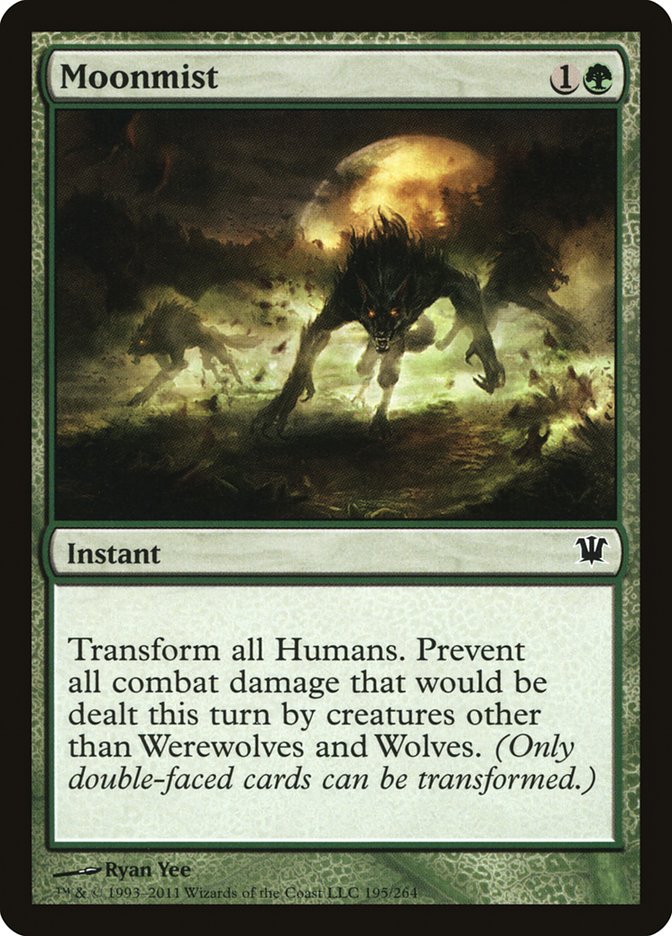
Before anyone says anything, I just really like werewolves. I had to get this card onto the list, okay?
In all seriousness, Moonmist is an absolutely amazing card to have in a werewolf deck, either as a way to block an oncoming attack by transforming all your creatures by surprise or as a way of landing a huge blow, this is a must-have for werewolf decks.
#10. Jaheira’s Respite

There are definitely less convoluted ways to ramp than Jaheira's Respite. This card can be an amazing play at the right time, but I think it suffers from one big design flaw: its mana value is too high, but it can’t really be any lower. This card’s effect would be too powerful for any less mana, but if you already have five mana you can leave untapped, it’s possible you don’t really need the lands that much and could be playing better things. It can be great in landfall decks.
#9. Blessed Respite
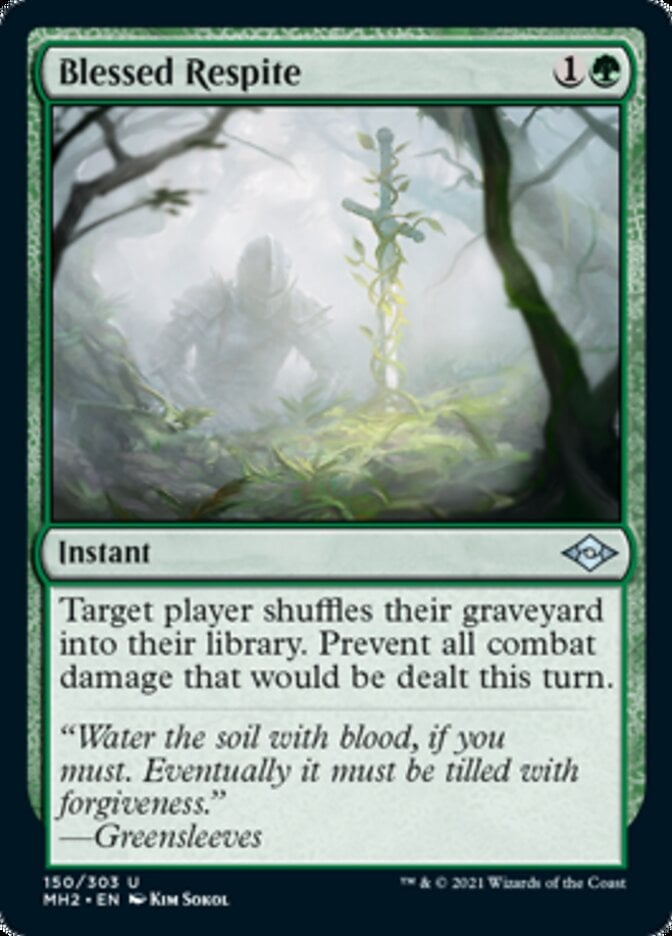
Blessed Respite’s graveyard returning effect can be useful in two very different ways. You can obviously use it to recover your own graveyard, but it can also be a great way to screw plenty of Golgari and Sultai decks over. They often depend on the right cards being in their graveyards, and you can at least temporarily rob them of that.
#8. Druid’s Deliverance
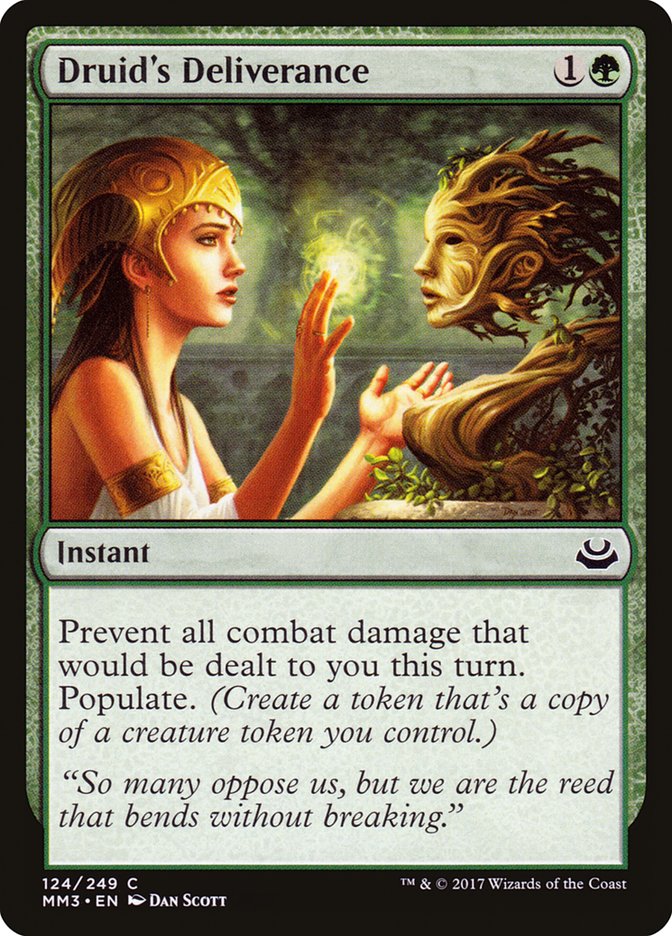
This is yet another relatively circumstantial card since you need to have creature tokens on the field to make Druid's Deliverance work at its best. It’s relatively easy to create some tokens when playing green, so it should be easier to take advantage of this card’s full effect.
#7. Obscuring Haze
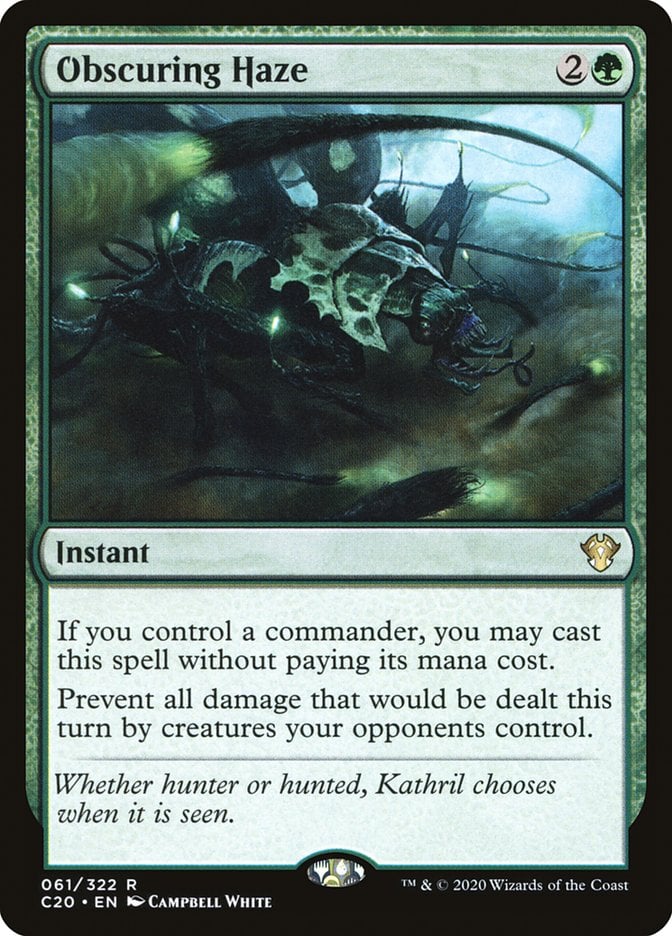
Obscuring Haze is definitely far from the strongest among this cycle of cards that you can cast for free if you control your commander. If you do, it’s still a free way to prevent all damage dealt by creatures your opponents control, and that’s pretty great.
#6. Constant Mists
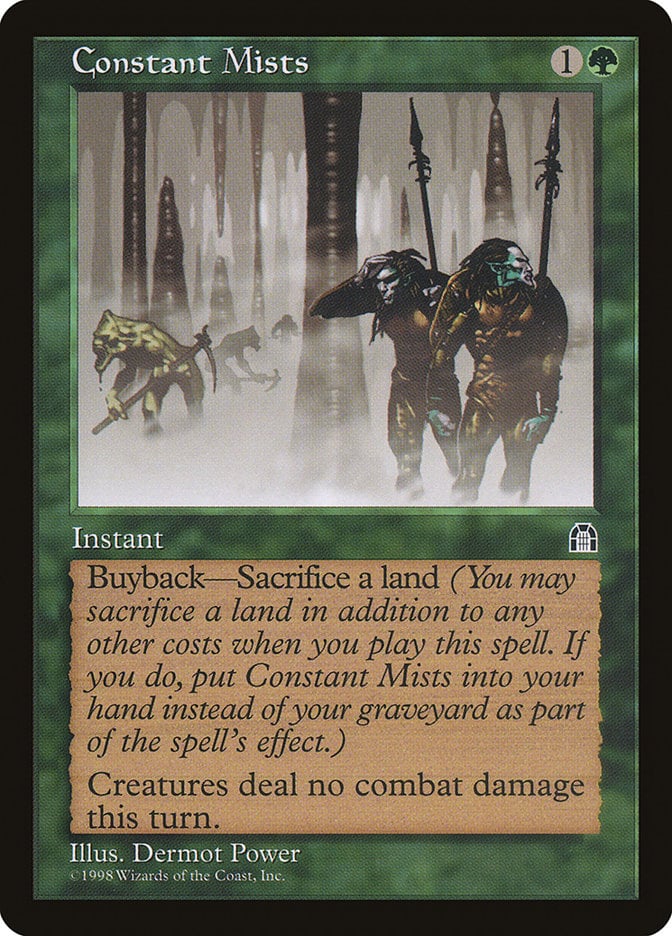
Constant Mists’s buyback cost can be a pretty steep one, but it can help keep you in the game for several turns. This card also has the advantage that there are quite a few ways to play lands from your graveyard in green, so it has some nice synergies you can build into your deck.
#5. Arachnogenesis

Are you going to create dozens and dozens of spider tokens with Arachnogenesis? Probably not. But even half a dozen 2/2 tokens can make a massive difference on the field, especially if your opponent just attacked with that many creatures. It probably also means they don’t have many blockers left.
#4. Spike Weaver
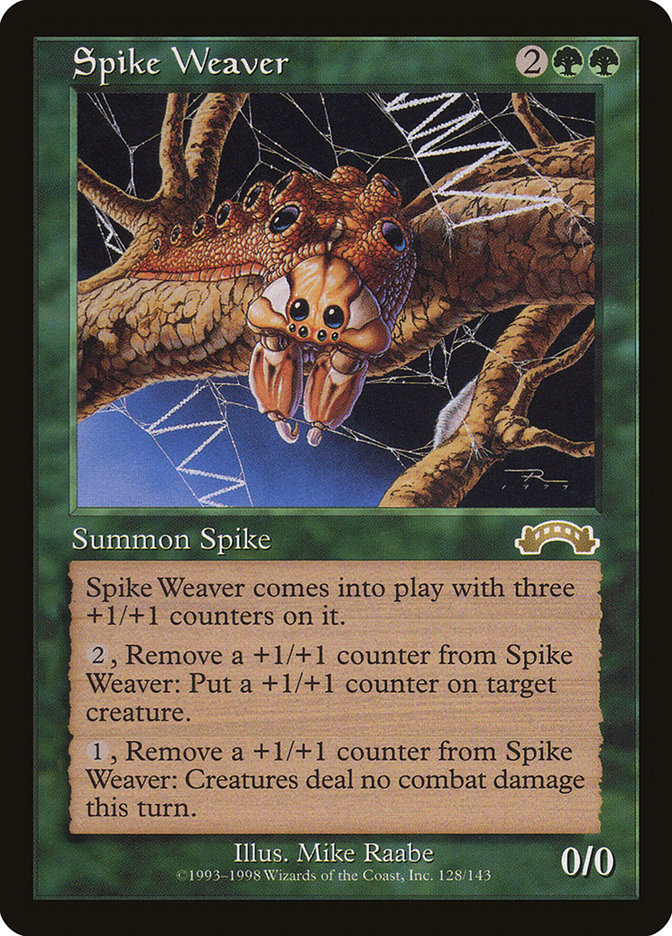
Maybe it won’t be the very best in many decks, but Spike Weaver can prove to be a great way to prevent combat damage. Playing it in a +1/+1 counters or proliferate focused deck can keep it consistently big so that it’s both useful as a creature and as a repeatable Fog. For a colorless mana, too! Even at its worst, it’s still three Fogs on a body.
#3. Fog
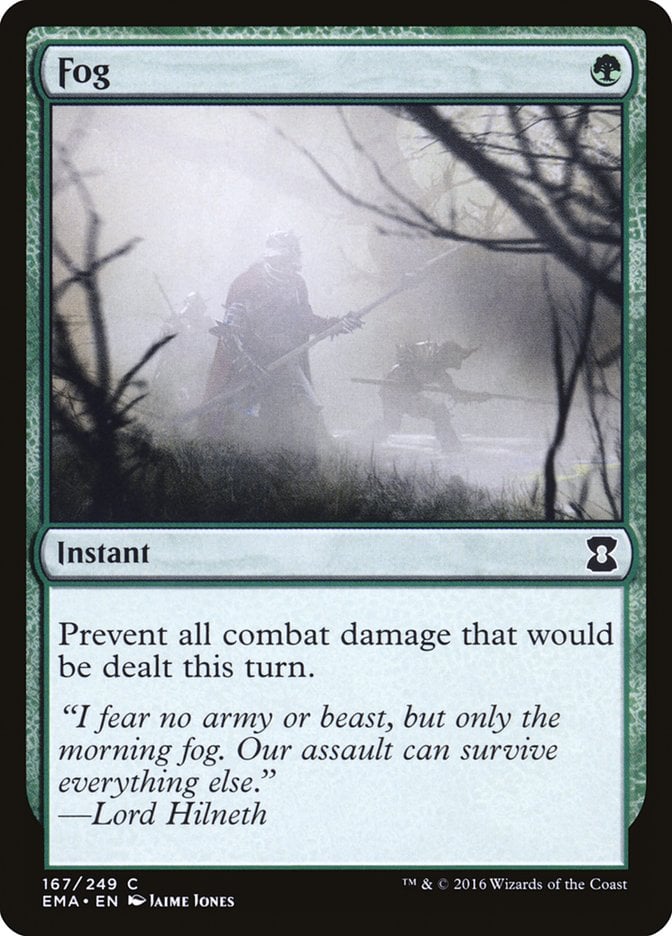
Fog is everyone’s first damage prevention card. It’s an absolute staple of Magic (or at least it used to be almost 20 years ago, don’t judge me). It’s kind of like Shivan Dragon. Absolute newcomers to the game think it’s an incredible card. The more you play, the more you realize it’s a pretty limited card that isn’t as strong as it seems. Then you become even more experienced and realize that, while it’s not as strong as you had come to think, it’s definitely far from a bad card and can be great in certain circumstances.
#2. Spore Frog
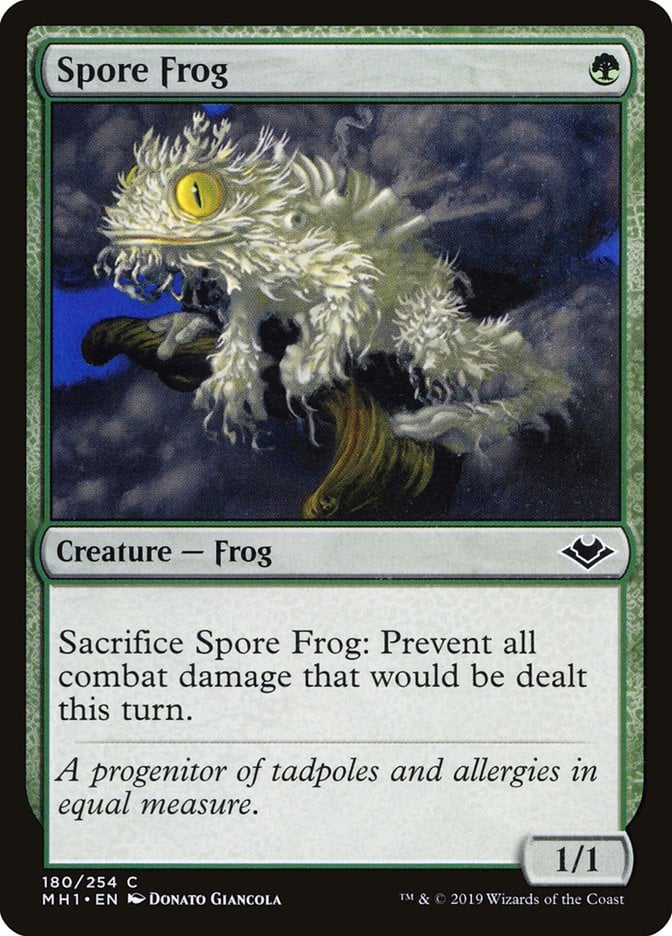
You may be wondering: why did I place Spore Frog at the number 2 spot in its color, but Kami of False Hope was only number 5 in white? The answer’s relatively simple: Spore Frog sees a lot of play in graveyard recursion decks. You can keep bringing this little amphibian back from the dead over and over for an almost constant Fog effect.
#1. Vigor
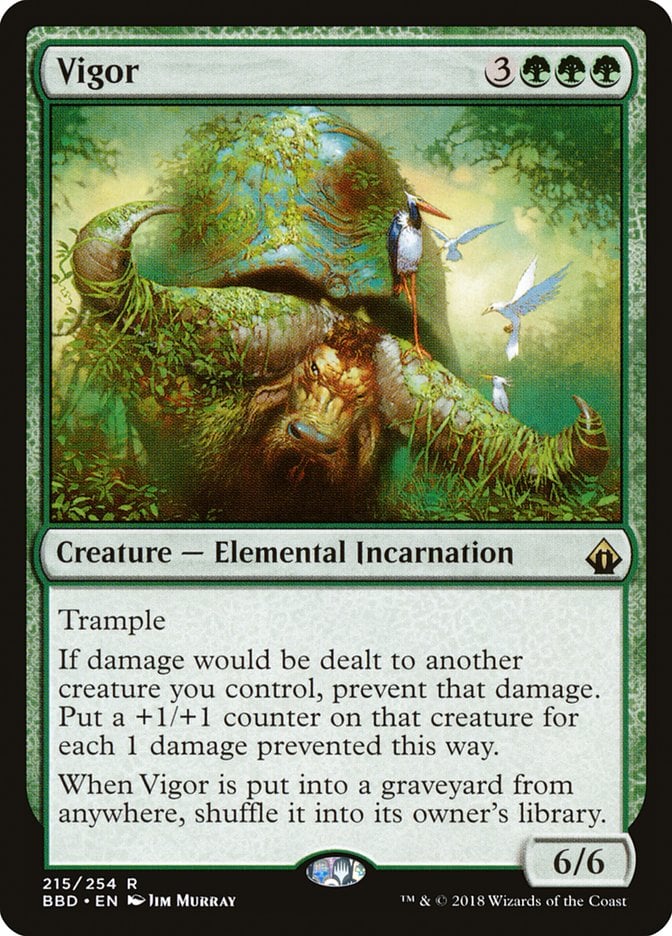
Vigor doesn’t really prevent any damage that would be dealt to you directly, but it does so in a roundabout way by preventing all damage that would be dealt to other creatures you control while simultaneously making them grow. It’s an incredible card to combo with something like Blasphemous Act to give all your other creatures 13 +1/+1 counters at once.
Best Multicolored Damage Prevention Cards
#8. Batwing Brume
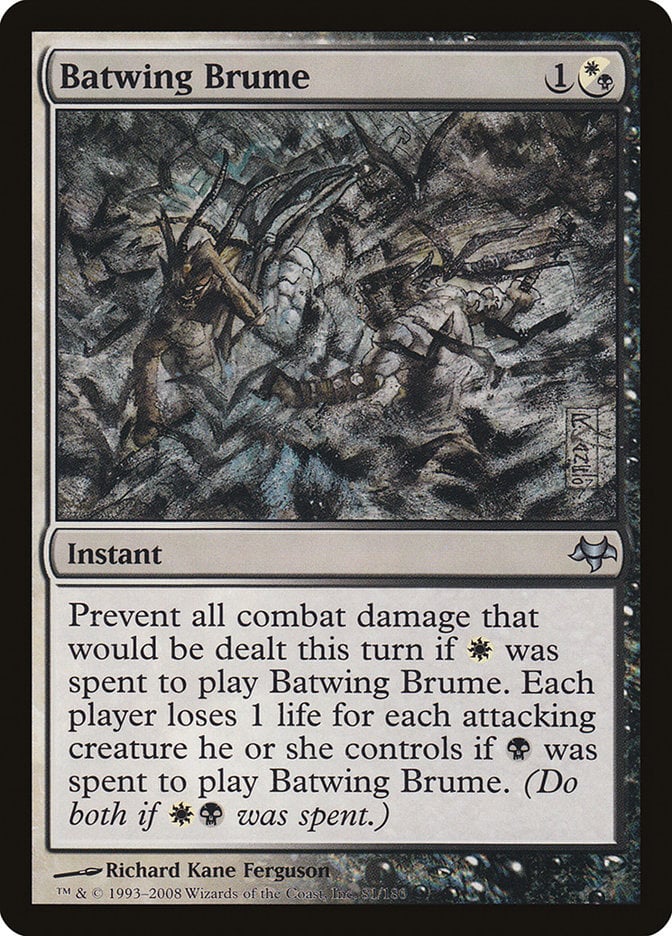
The main issue with this card is that its effect isn’t 100% consistent depending on your mana base. I play it in my own Queen Marchesa pillowfort deck, and it’s been consistent most of the time. I’ve also had a few situations when I’ve had to let go one of its effects in a pinch, especially the one that causes your opponents to lose life.
#7. Tajic, Legion’s Edge
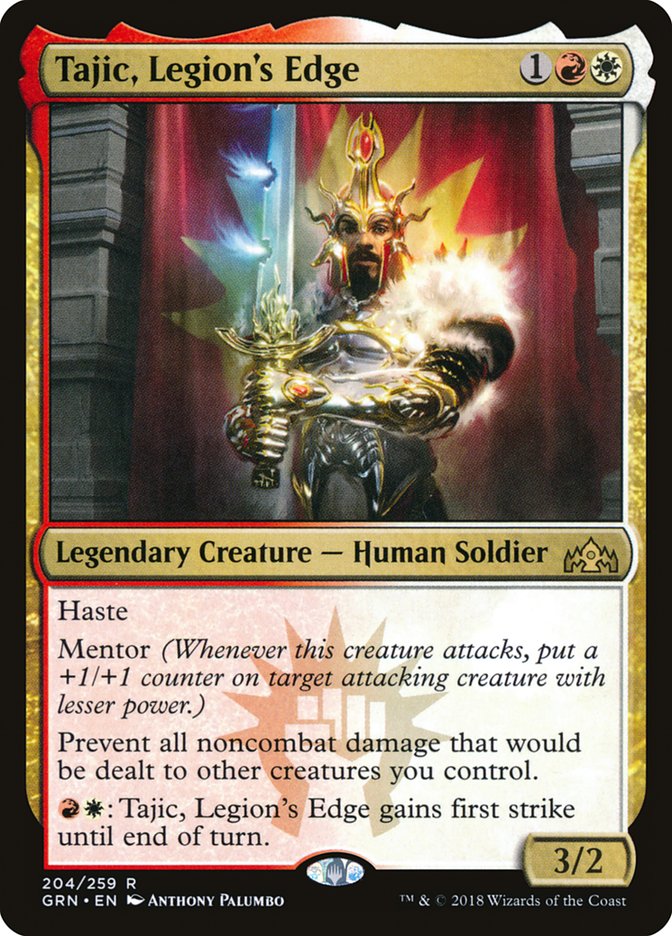
Tajic, Legion's Edge may be unable to prevent your creatures from dying during combat, but it’ll at least ensure that something like Blasphemous Act becomes essentially useless. This is a great line of defense for go-wide decks that are at risk of losing their armies to simple damage spells.
#6. Rem Karolus, Stalwart Slayer

Gisela, Blade of Goldnight may’ve been turned into an eldritch abomination under Emrakul’s influence, but it’s good to see her legacy lives on in Rem Karolus, Stalwart Slayer. This card is obviously a weaker (but cheaper) version of Gisela’s first iteration. It’s not a game-ender, but it’s a nice tool to have around nonetheless.
#5. Kiora, the Crashing Wave
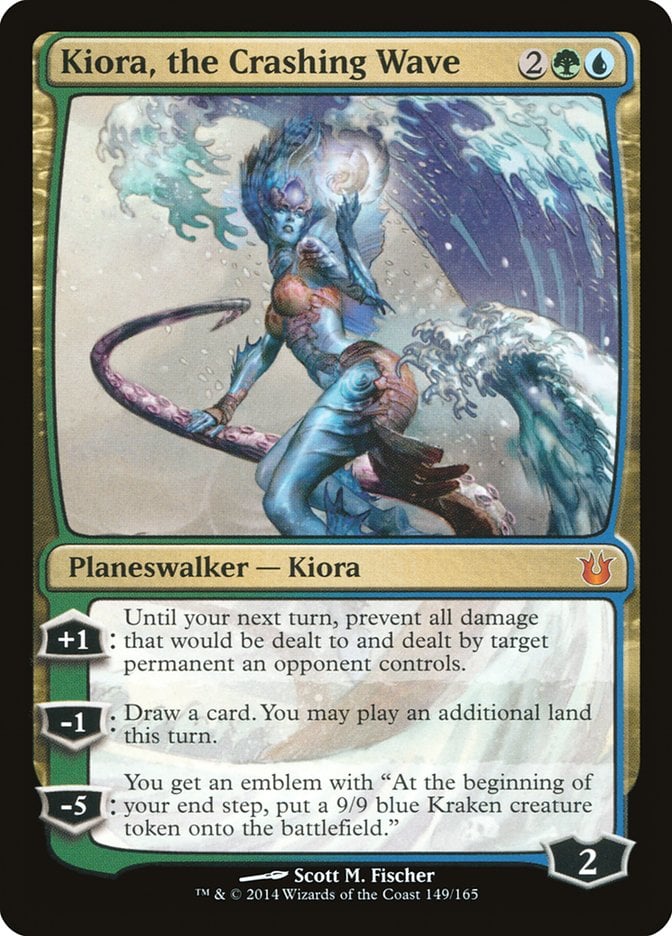
Kiora, the Crashing Wave’s damage prevention effect may seem a bit weak at first glance, but I’ve seen it prove its worth more than once. This effect shines thanks to its versatility; you’re not only preventing combat damage, but you can also shut off cards like Outpost Siege or Dragon Tempest or even planeswalker abilities like Sorin Markov’s +2 ability. Not to mention this card’s -5 effect can be a huge finisher.
#4. Deflecting Palm
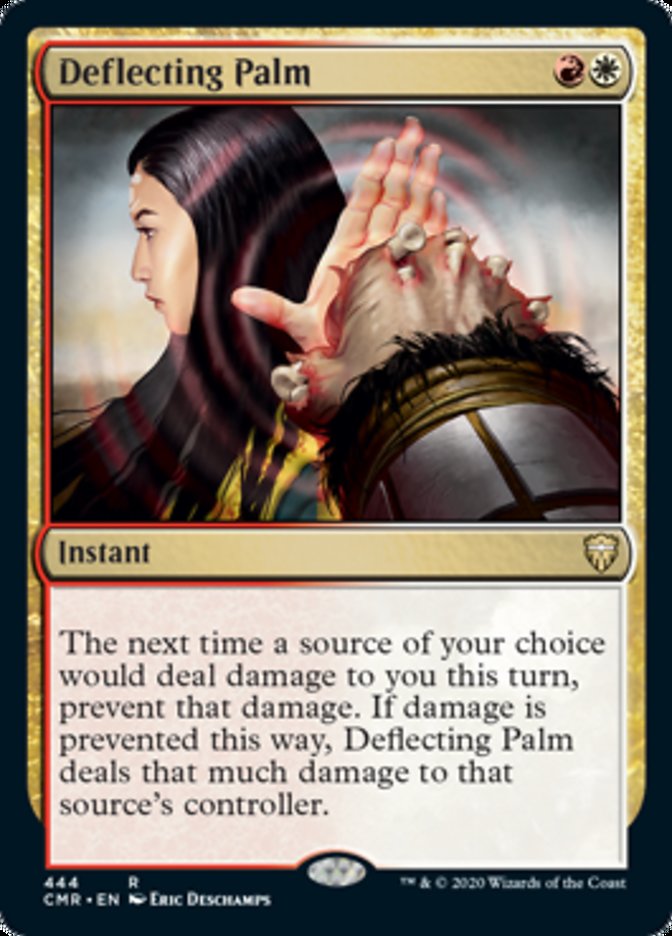
Not only is Deflecting Palm a great card; it also has a huge cool factor to playing it. If you play this card at the right time, you can turn a game-ending spell or creature around and have it finish off its owner, which is no small deal. Winning a game that way is such an absurdly cool way to do it.
I also give Deflecting Palm some extra points thanks to its art. It’s one of the very few card arts that make me feel squeamish at the type of violence it depicts, all while showing Narset (neurodivergent icon) carelessly dismissing her attacker. It’s just a very cool card.
#3. Inkshield
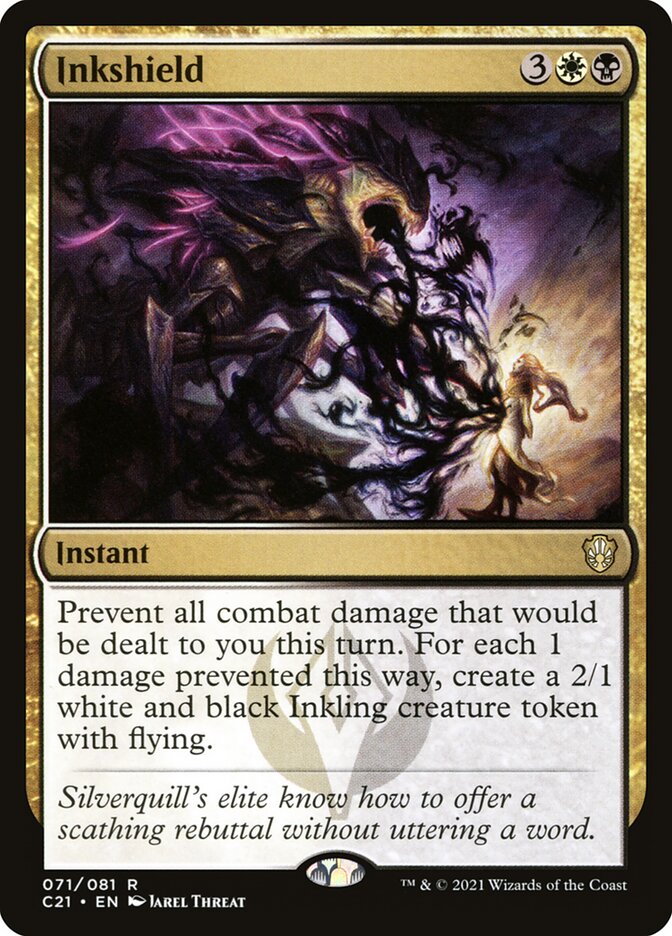
Inkshield’s mana value can be pretty high for a reactive spell. Leaving five mana open each turn just in case may not be the best idea. But this card played with good timing can fill your field up with fliers for a wonderful rebuttal.
#2. Iroas, God of Victory
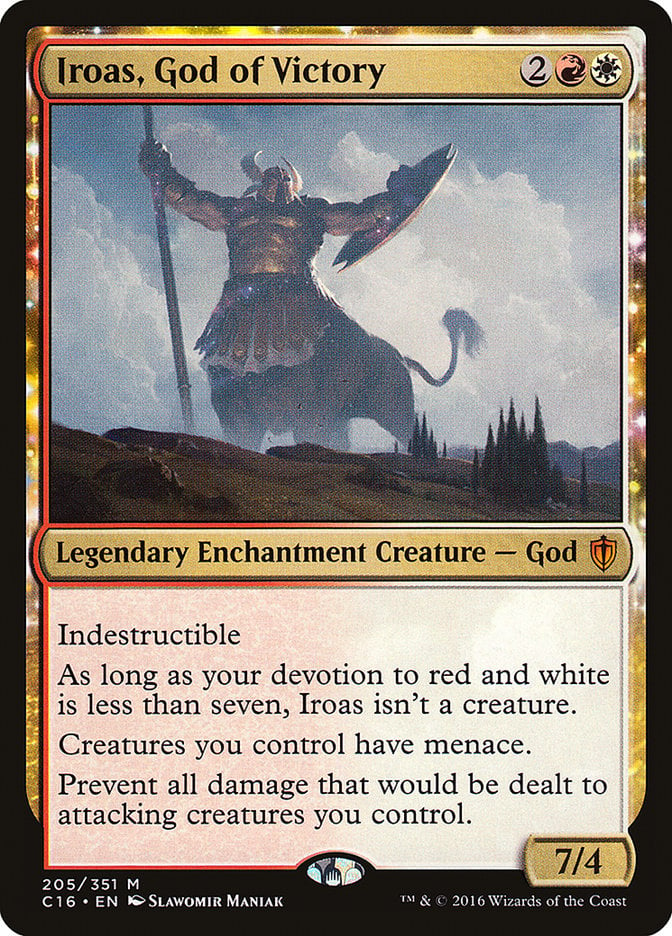
Iroas, God of Victory is, in my opinion, one of the most fundamental cards for Commander aggro decks. The strategy is sorely underpowered in the format, and cards like this one are what help it become more viable by adding some much needed protections to attacking with your creatures.
#1. Gisela, Blade of Goldnight
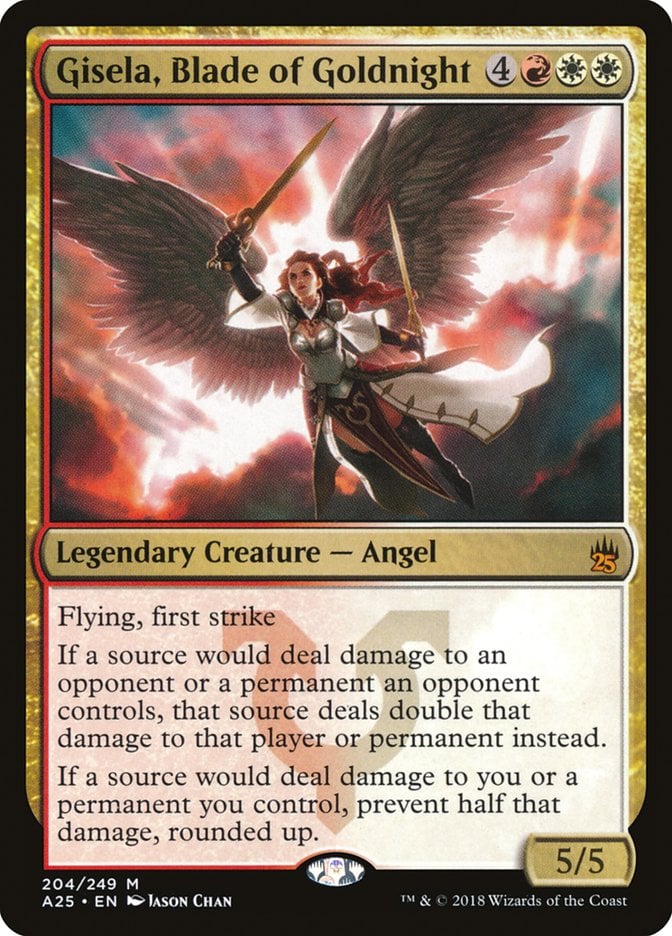
Gisela, Blade of Goldnight’s mana value may be pretty high, but it definitely makes up for it in a huge way. This card benefits both offensive and defensive strategies by doubling the damage dealt to your opponents and their permanents and halving any damage dealt to you and your permanents. Any doubling effect like the first ability on Gisela, Blade of Goldnight paints a huge target on your chest, but thanks to its second ability, you’re relatively well protected in case that happens.
Best Colorless Damage Prevention Cards
#3. Multiclass Baldric
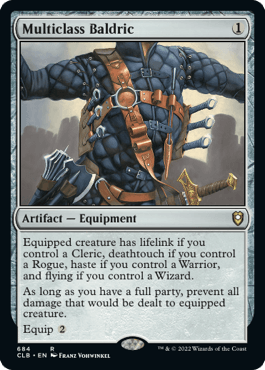
When the party mechanic was first introduced in Zendikar Rising, it felt a bit lacking. It was a fun and interesting idea, but it was far from the best. Commander Legends: Battle for Baldur’s Gate expanded on it in more interesting ways, like Multiclass Baldric. This card is both cheap to cast and to equip, but it’s mostly useless if you don’t have a party. As your party gains the members it needs, the equipped creature also gets more and more advantages, including having all damage dealt to it prevented.
#2. Dolmen Gate
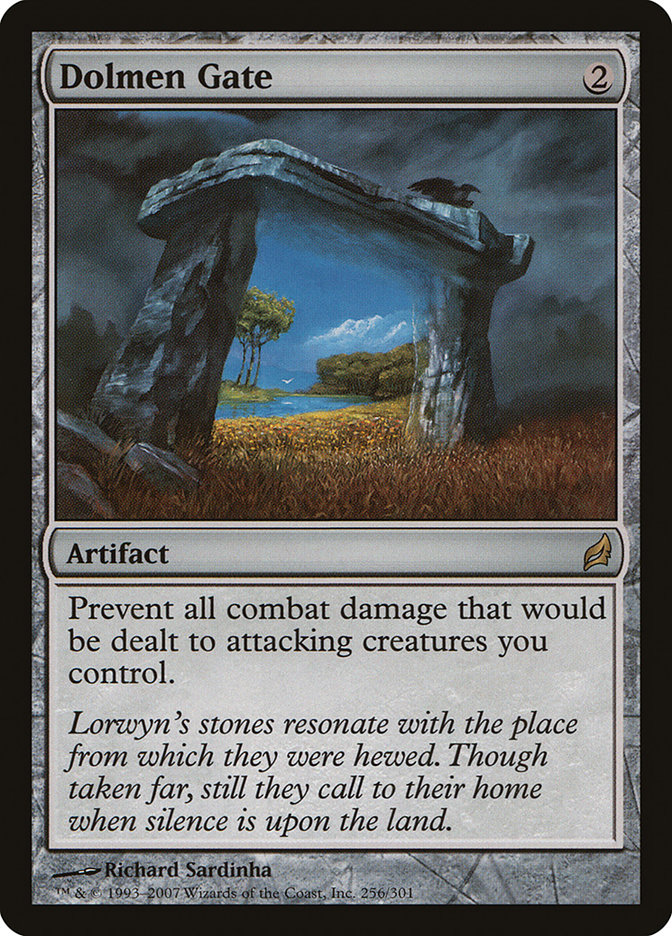
Who hasn’t had a great boardstate that could wreak havoc on your opponents, but you’re just too weary of attacking because they just might have a combat trick that can turn things around? Dolmen Gate has you covered.
You (mostly) don’t have to worry about attacking anymore. Your creatures won’t partake in all that receiving combat damage nonsense. This is a specially good card in vigilance-focused decks since that combination means almost no downsides to attacking.
#1. Maze of Ith

Damage prevention shows its strength when it’s a repeatable effect that can keep threats away. Maze of Ith may only prevent a single creature from dealing damage, but it does so consistently which means keeping a large threat at bay for as long as you need. It’s also a good way to save one of your attacking creatures if you fall into one of your opponents’ traps
Best Damage Prevention Payoffs

The only card that has an actual effect that cares about damage being prevented is Selfless Squire, so it’d be hard to mention payoffs that specifically care about damage prevention.
Damage prevention does find its place in decks that care about you not taking damage for specific effects. The biggest example of this is decks built around the monarch ability where you’re trying to prevent taking damage as much as possible.
Is Blocking Preventing Damage In MTG?
While blocking does prevent you from receiving damage specifically, it’s not damage prevention per se. Damage prevention is a replacement effect that completely nullifies that damage; blocking only makes creatures receive damage in your (or your planeswalkers’) place.
Does Preventing Damage Stop Deathtouch?
Preventing damage absolutely stops deathtouch. Deathtouch is an ability that’s solely depending on the creature dealing damage to another creature, so if damage is never dealt, deathtouch is nullified. Same thing would work by reducing the deathtouch creature’s power to 0.
Does Prevent Damage Prevent Destroy?
Damage prevention doesn’t prevent effects or abilities that specifically say to “destroy” one or more creatures. It can prevent a creature from being destroyed by damage being dealt to it, but it does nothing against destruction effects.
Does Protection Prevent All Damage?
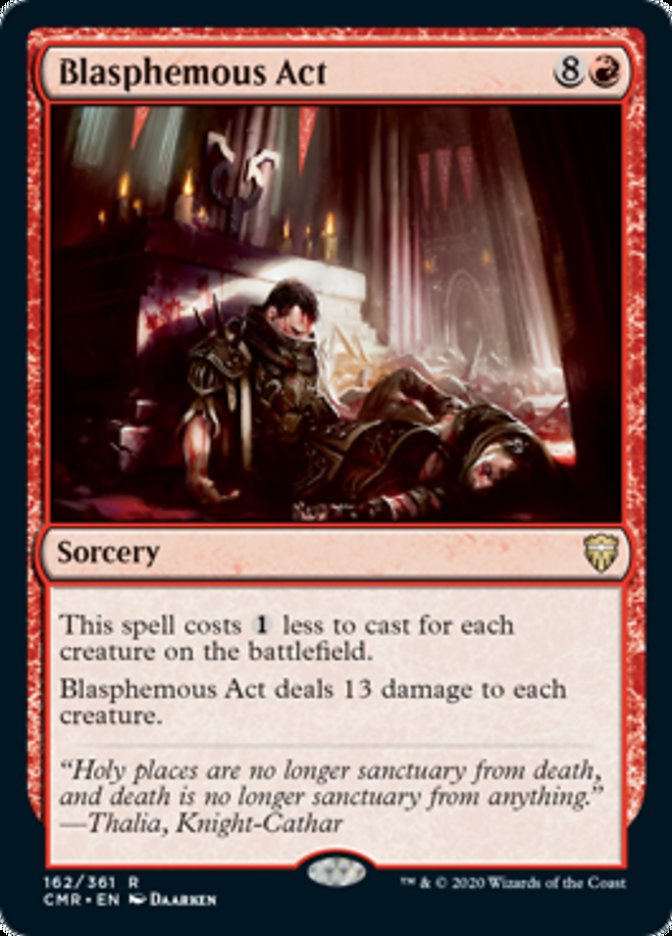
Protection prevents all damage that would be dealt by sources with the specified quality. A useful example: a creature with “protection from red” won’t receive any damage from spells like Blasphemous Act.
What Does “Damage Can’t Be Prevented” Mean?
Damage can’t be prevented essentially works as a replacement effect to damage prevention’s own replacement effect, making it so that the damage prevention is rendered useless. It basically bypasses any damage prevention effects.
Can Trample Damage Be Prevented?
Yes, but you’ll usually have to work for it. Trample is an ability that checks for lethal damage being dealt to a creature before allowing its controller to assign the “surplus.” That damage dealt to a player or planeswalker isn’t combat damage, though, which is important because damage prevention effects often specify the source, target, or type of damage it prevents. An effect that prevents combat damage won’t prevent trample damage.
Riot Control, for example, prevents all damage (of all types) dealt to you (the intended target). However, Black Knight won’t die to a white trampler, but it also won’t prevent that creature trample damage from being dealt to you.
Wrap Up
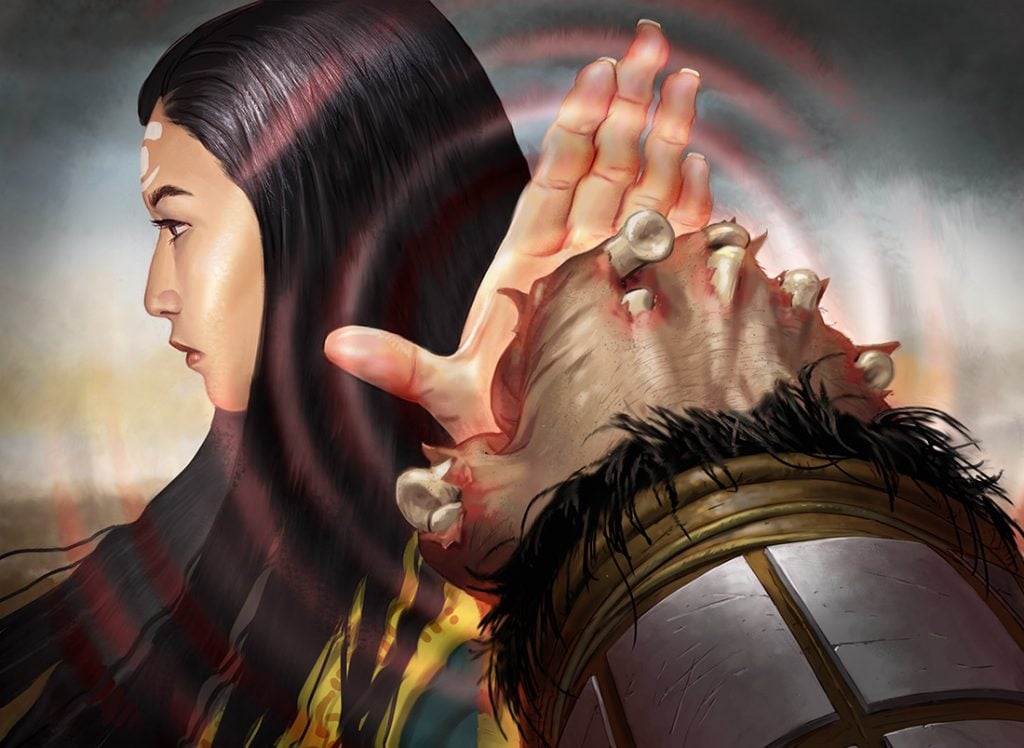
Deflecting Palm | Illustration by Eric Deschamps
I personally like damage prevention as a mechanic. It hasn’t been overused, but it has enough support to be versatile and strong. I also think it fits pretty neatly into any deck that runs the right colors and can be an interesting source of interaction throughout the game. My only gripe with the ability is Spore Frog when it’s specifically played in Muldrotha, the Gravetide, but this probably has to do with my best friend essentially stalling games every time he plays this combination.
But enough about me! What do you think about damage prevention? Do you play any of these cards in your decks? What’s your favorite way to render attacking creatures useless? Feel free to leave a comment. And don’t forget to check out the Draftsim Discord where you can join our amazing community of Magic fans.
That’s all from me for now. Have a good one, and I’ll see you next time!
Follow Draftsim for awesome articles and set updates:
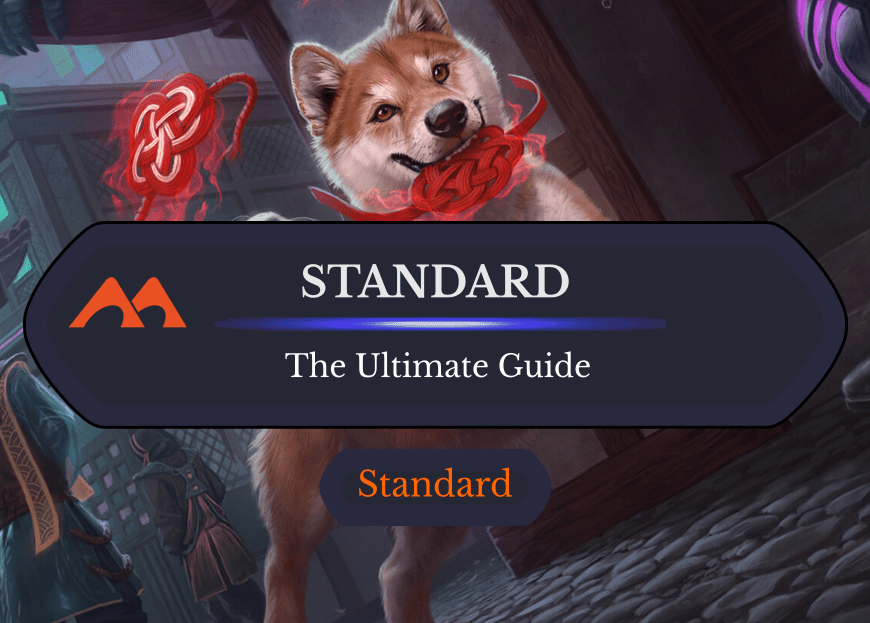

Add Comment